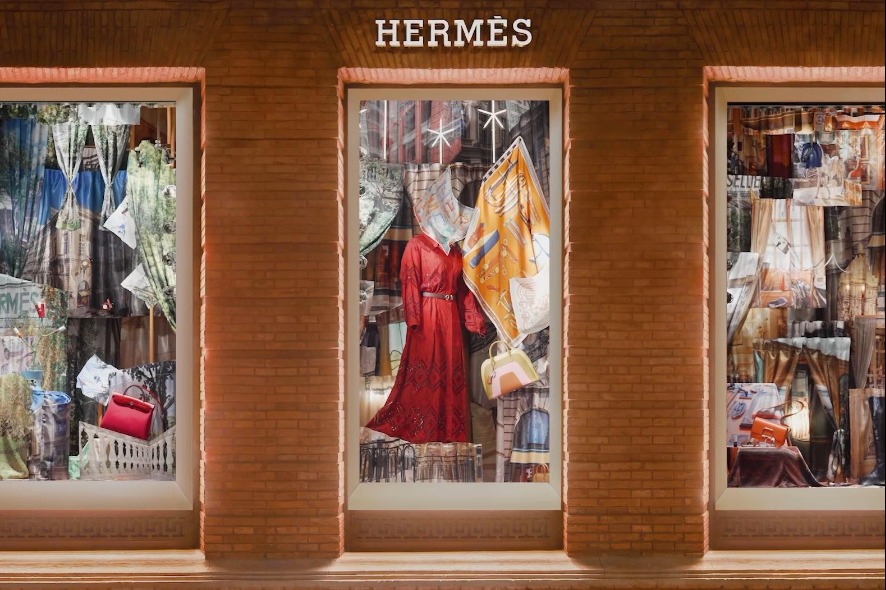A jumbo haul of crustacean delights


The season has arrived for both hairy crabs from Yangcheng Lake in Jiangsu province and Filipino mud crabs from more than 2,000 kilometers away.
Those in Beijing with a craving for crustacean can enjoy a feast at Jumbo Seafood restaurant that offers crab dishes prepared in 10 different ways, whether they hail from domestic lakes or distant oceans. In addition to favorites like chili crab and black pepper crab, Jumbo Seafood also offers wok-baked cream crab, stir-fried salted-egg crab, deep-fried crispy butter floss fried crab, white pepper clay-pot crab and wok-baked crab with rice noodles.
Two new seasonal crab dishes have been added to the menu since October-the butter crab and drunken crab. The former method employs a more Western cooking style, while the latter is a centuries-old Chinese classic.
According to Chan Kian-wah, executive chef at Jumbo Seafood, the Filipino mud crabs have the perfect balance of crab roe and white crabmeat.
"To prepare the butter crab dish, the mud crabs are first boiled, then cooled, then refrigerated, which keeps the white meat firm and fresh and the roe perfectly creamy," he says.
The butter crab is served with a hint of kumquat oil which has both a sweetness and a slight bitterness that complements the crab.
The "drunken" cooking method sees the crabs boiled with sea salt, ginger and shallot before being soaked in a fragrant mixture of 20-year-old yellow liquor, mature vinegar and rock sugar. The marinade infuses deeply into the crab, giving it a sweet-yet-savory character with a hint of alcohol-induced warmth.
"These so called 'red cream' crabs have time to naturally grow and develop, leaving them with a high quality of rich crabmeat," Chan says.
Founded in Singapore in 1987, the original Jumbo Seafood location has become an unmissable stop on any food visitor's Singapore itinerary. The chain opened its Beijing branch in 2017, offering a menu of authentic Singaporean seafood dishes.
The most famous dish on the menu, chili crab, has been named one of Singapore's national dishes. It was created in 1987, and the recipe has only been slightly tweaked since.
Live mud crabs are drenched in a sauce made from more than 10 different Southeast Asian spices, creating a flavorful blend of spiciness combined with sweet and sour notes from tomatoes. Chicken soup is then added to complete the sauce, which contrasts perfectly with the natural sweetness of the crabmeat.
"The best way to finish the dish is to use a deep-fried mini bun to mop up every last drop of the sauce," Chan says.
According to Chan, the mud crab has a hard shell and sweet meat which is more suitable for stew, while the Dungeness crab's shell is softer and its meat is exquisite when fried.
Deep-fried crispy butter floss fried crab, using the Dungeness crab, takes the most time to prepare. Diners have to wait for about 50 minutes to enjoy the dish.
"The dish requires an experienced chef, because the control of the heat and the timing is crucial," Chan says.
The crab is fried first and the next step is to make the golden floss. The temperature of the oil needs to stay under 50 C, as the egg yolk is poured in with one hand while the other uses a spoon to stir the surface of the oil in a circular motion.
"The spin cannot be too fast or too slow, and the temperature cannot be too high or too low," Chan says. "If the temperature goes too high, the egg yolk won fry into a floss and will have bubbles. On the other hand, the floss will be too short if the oil temperature is too low."
He adds: "The 10 crab dishes have been created, one by one, by our chefs over the course of the past three decades, and even now, we still encourage our chefs to keep conceiving of new ways to cook crab."




































